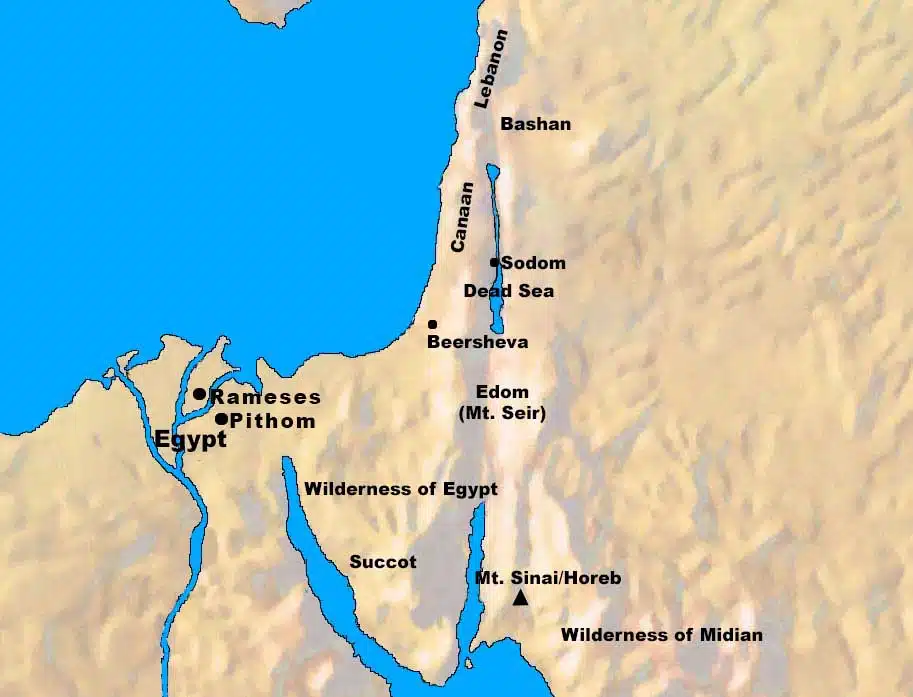The tabernacle construction begins. In these verses, the curtains were created by the skilled artisan Bezalel. He also made other items associated with the curtains. The designs for the curtains were given in Exodus 26:1 – 14.
The construction began when all the skillful men among those who were performing the work made the tabernacle. The first part of the process was making the curtains. They needed to make ten curtains, which were comprised of fine twisted linen and blue and purple and scarlet material.
The curtains were also adorned with cherubim. The cherubim (the word is plural) seem to be a class of angelic beings connected to guarding the holiness of the LORD’s presence. Cherubim were placed to guard the gate into the Garden of Eden after Adam and Eve were removed (Genesis 3:24), and cherubim were to be placed at each end of the ark (Exodus 25:18). Here, the images of cherubim were to be placed on the curtains of the tabernacle, where the LORD would dwell. These angelic decorations would be a visible reminder that the tabernacle was a holy place. Because of their importance, they needed to be the work of a skillful workman. In fact, Bezalel made them himself.
As described in Exodus 26:2, the length of each curtain was twenty-eight cubits and the width of each curtain four cubits; all the curtains had the same measurements. Since a cubit was approximately eighteen inches (45.7 cm), this would make each curtain around forty-two feet (12.8 meters) long, and six feet (1.82 meters) wide. After the ten curtains were completed, Bezalel joined five curtains to one another and the other five curtains he joined to one another. The curtains comprised the walls of the tabernacle according to the design shown by God to Moses on the mountain (Exodus 26:1).
To join the curtains together, Bezalel made loops of blue on the edge of the outermost curtain in the first set; he did likewise on the edge of the curtain that was outermost in the second set (v. 11). The Hebrew word for loop (“lulai”) is used only in Exodus 26 and 36. The description of how the loops were to be made is in Exodus 26:4. To provide the means of the connecting the curtains, he made fifty loops in the one curtain and he made fifty loops on the edge of the curtain that was in the second set (v. 12), ensuring that the loops were opposite each other.
Once the loops were made and placed on the curtains, he made fifty clasps of gold and joined the curtains to one another with the clasps, so the tabernacle was a unit (v. 13). These “fifty clasps” (specified in Exodus 26:5) were used with the loops to join the curtains together. Joined together, the curtains would comprise the walls of the “one tabernacle” (Exodus 26:6).
Biblical Text:
8 All the skillful men among those who were performing the work made the tabernacle with ten curtains; of fine twisted linen and blue and purple and scarlet material, with cherubim, the work of a skillful workman, Bezalel made them. 9 The length of each curtain was twenty-eight cubits and the width of each curtain four cubits; all the curtains had the same measurements. 10 He joined five curtains to one another and the other five curtains he joined to one another. 11 He made loops of blue on the edge of the outermost curtain in the first set; he did likewise on the edge of the curtain that was outermost in the second set. 12 He made fifty loops in the one curtain and he made fifty loops on the edge of the curtain that was in the second set; the loops were opposite each other. 13 He made fifty clasps of gold and joined the curtains to one another with the clasps, so the tabernacle was a unit.
Check out our other commentaries:
-
Matthew 19:13-15 meaning
Little children are brought to Jesus, but the disciples turn them away. Jesus calls them back and says to let them come. He tells the...... -
Matthew 23:1 meaning
After the religious leaders stop debating with Jesus, He begins to address His disciples, as the crowds listen on....... -
Deuteronomy 4:44-49 meaning
This section provides the historical and geographical setting for the covenant message. It also summarizes Israel’s victory over the two kings of the Amorites, across...... -
Daniel 6:10-13 meaning
Although Daniel knew the decree had been signed he continued praying, the rulers accused him before the king....... -
Proverbs 4:20-27 meaning
The heart is the source of life and we ought to fill it and guard it with wisdom, focusing our gaze and attention on the......



